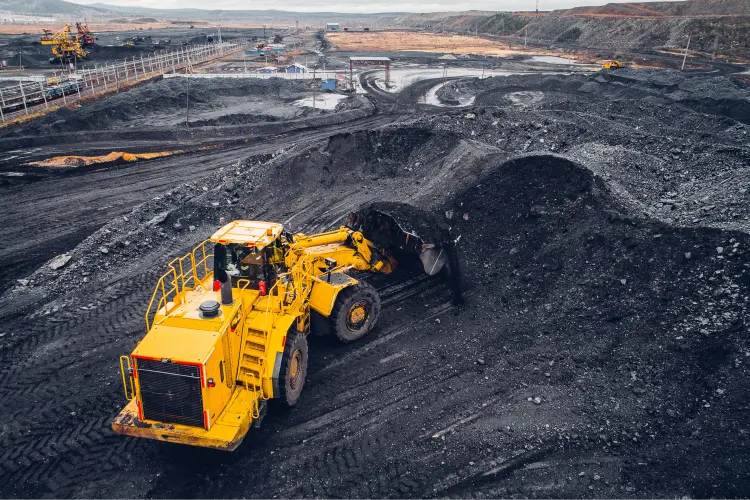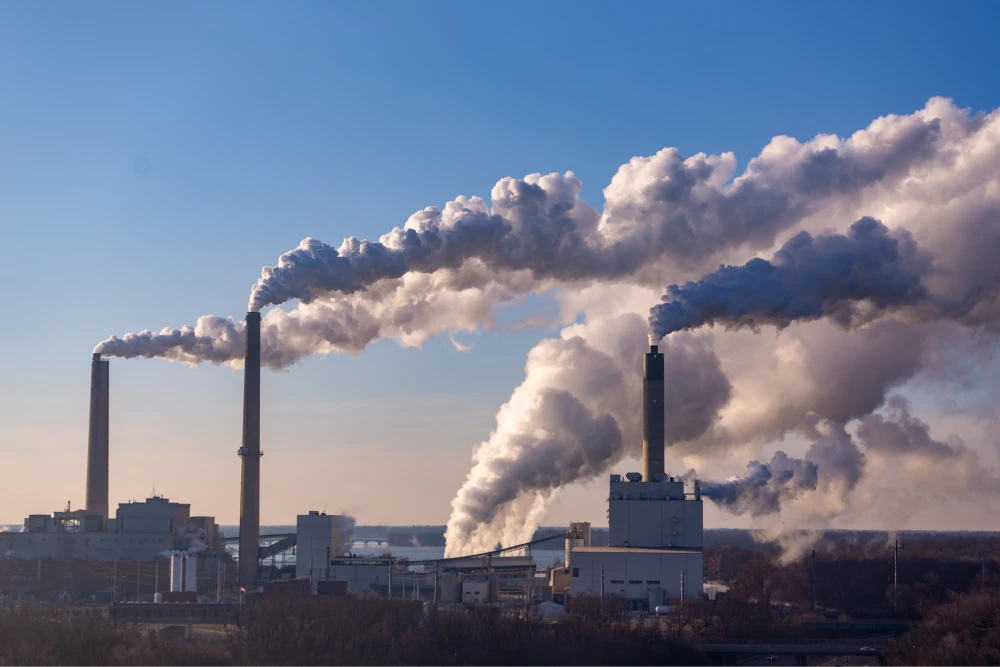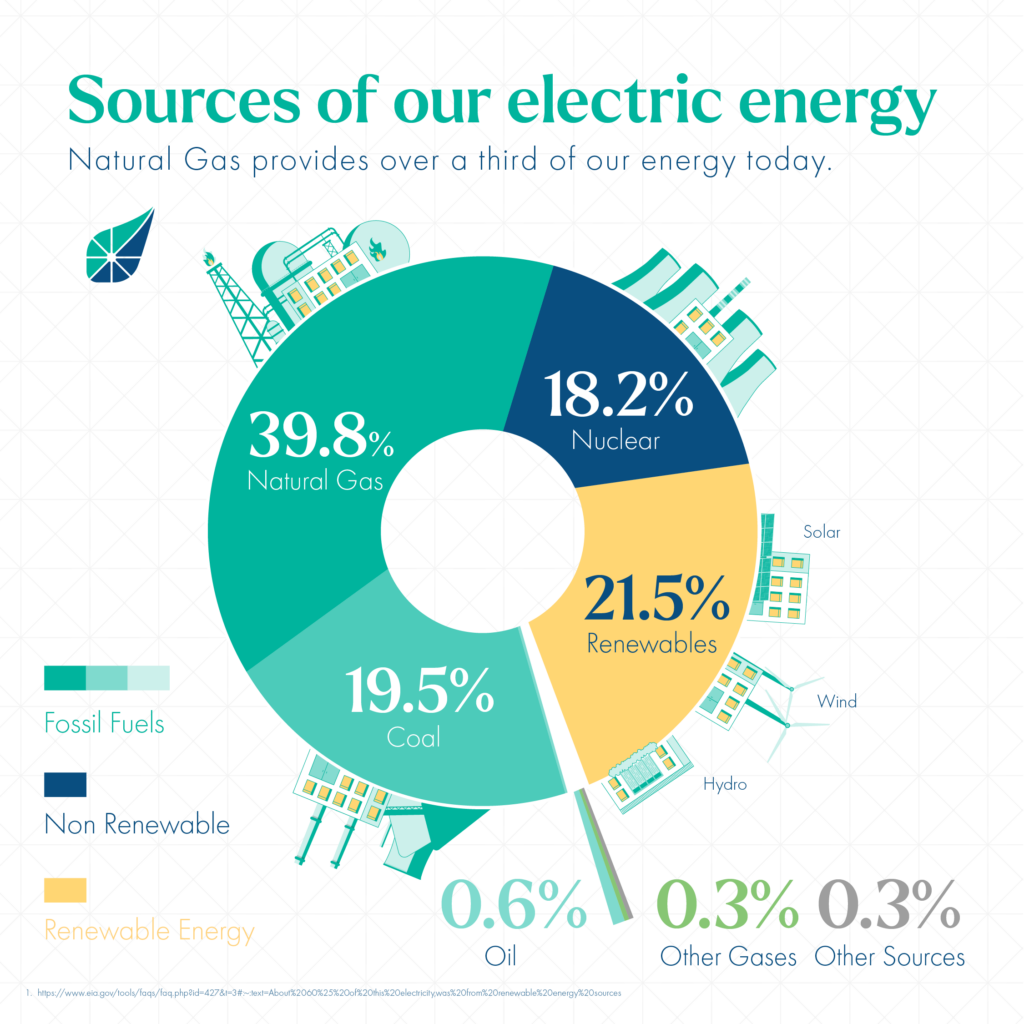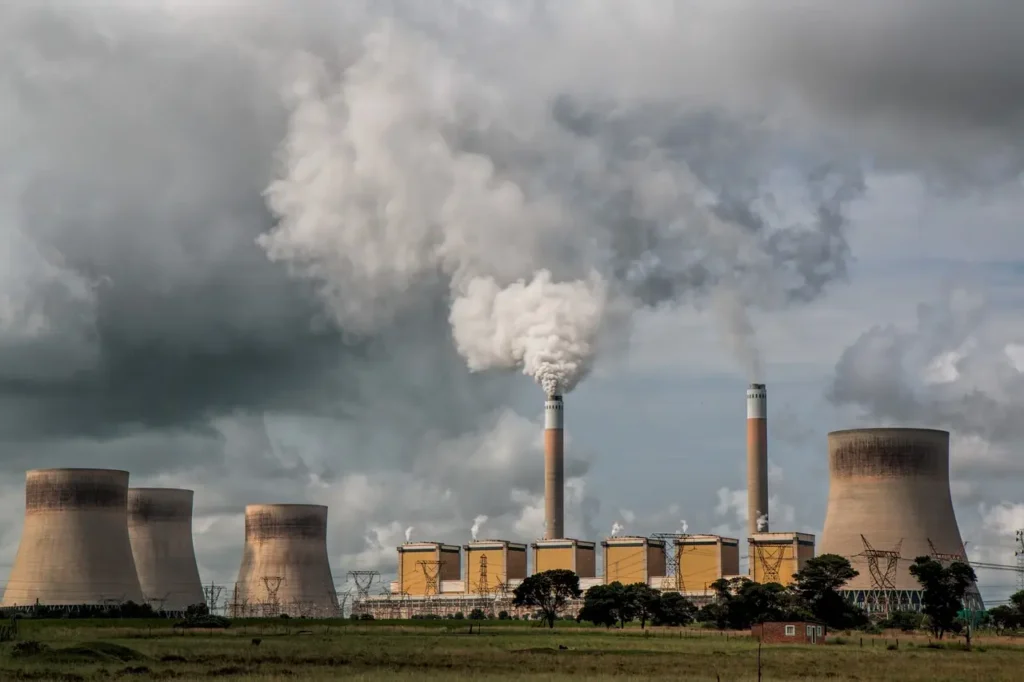Environmental Impacts of Coal
5 minute readCoal energy has powered industries for decades, but its environmental impact raises serious concerns
Home > Learning Center > Energy Production > Pros and Cons of Coal
9 minute read • Last update August 2024

We’ve all heard about coal energy – good and bad. But what is coal energy, and how does it fit into our daily lives? In this article, we’ll take a closer look at coal energy, how it works, and how it impacts our environment.
| Pros of Coal | Cons of Coal |
|---|---|
| Large supply across the globe | Environmental impact and greenhouse gas emissions |
| High energy density | Health risks from pollution |
| Well-built and established infrastructure | Coal mining can be hazardous |
| Economic benefits and job opportunities | Destruction of habitats, forests and local ecosystems |
| Relatively cheap energy source | Mining and power generation require significant amounts of water |
| Base load power generation | Generation of waste such as ash and sludge |
Coal reserves across Earth are extensive and widely distributed. There is enough supply for many years into the future. According to the Energy Information Administration, there is enough coal to last at least another 422 years in the United States. Although, this is subject to change based on changes to ongoing rates of coal consumption. If we use less coal, the reserves will last longer and vice versa.
In the world of electricity generation, energy density is a measure of the amount of energy stored in a fuel source per unit volume. For fuels, high energy density is a benefit because less fuel is required to generate the same amount of power compared to a fuel with lower energy density.
Coal has a much higher energy density than renewable energy sources such as wind and solar, which is wind and solar farms are often large operations that require a lot of land. Compared to other fossil fuels, coal has a lower energy density. Natural gas has the highest, followed by oil, then coal.
| Fuel Source | Energy Density (Megajoules per kilogram) |
|---|---|
| Natural Gas | 55 |
| Oil | 44 |
| Coal | 24 |
Humans have relied on coal for electricity generation since 1882, with the opening of the Edison Electric Light Station. Since then, the infrastructure for mining, transporting, and utilizing coal for power has become widespread and well-established. In the United States alone, there are over 200 coal-fired plants in operation. However, that number continues to fall as we shift towards a greater emphasis on natural gas and renewable power generation.
As of 2023, there were over 36,000 people employed in the coal sector in the United States.
Compared to other fossil fuels like natural gas and petroleum, coal is much cheaper. According to the EIA, the weighted cost of coal between 2012 and 2022 sat around $2 per MMBtu (Million British Thermal Units). Natural gas ranged between $2 and $5 per MMBtu. Petroleum was the most expensive and volatile with costs between $7 and $16 per MMBtu.
Coal-fired power plants are effective are generating base load power, or the minimum amount of power needed to supply an electrical grid at any given time. Coal and nuclear plants are often used for base load power because they are generally not designed to quickly turn off and on. On the other hand, natural gas power plants are often used for peaking, or to meet periods of high demand, because they can be turned off and on rather quickly.

One of the most serious long-term global impacts of coal usage is its contribution to climate change and global warming. When coal is burned, it releases carbon dioxide, a greenhouse gas that traps heat in the atmosphere. This leads to adverse consequences such as droughts, rising sea levels, floods, extreme weather events, and loss of species. The severity of these impacts is directly related to the amount of carbon dioxide emitted, including from coal plants. In the U.S., coal power plants account for roughly one-quarter of energy-related carbon emissions.
When coal is burned, it releases various harmful pollutants into the air, such as mercury, lead, sulfur dioxide, nitrogen oxides, and particulates. These pollutants are linked to health issues like asthma, respiratory problems, heart diseases, cancer, neurological disorders, and premature death. Although the Environmental Protection Agency has set emission limits, many power plants lack the necessary pollution controls, and the future of these protections remains uncertain.
According to the Bureau of Labor Statistics, coal miners are more likely to be killed, be severely injured, or develop fatal illness than other workers. Coal miners face many dangers in their line of work including but not limited to:
There are other jobs with higher injury rates such as logging and roofing.
Per the EIA, coal surface mines were the source of over 60% of coal mined in the United States in 2022. Surface mines, as the name implies, take place on the surface of the Earth and wreck havoc on local areas. In some cases, coal mines rely on a process called mountaintop removal wherein explosives are used to blow up mountains to gain access to coal. These explosions destroy immediate areas and have significant negative impact on surrounding habitats and ecosystems.
According to a study from 2014 on water consumption for coal electricity production, surface and underground mining may require between 6 and 130 gallons of water per metric ton of coal produced. The water use varies based on each individual coal operation. In 2022, the U.S. produced over 500 million tons of coal. That means each year coal mining is responsible for the use of hundreds of millions of gallons of water.
Coal mining and power plants have significant effects on water sources. Coal ash, similar to the ash from a charcoal grill, is produced in large quantities by coal-fired power plants, with over 100 million tons generated annually. A considerable portion of this waste ends up in landfills, ponds, lakes, and other sites, posing a risk of water contamination over time. Coal mining also leads to acid rock drainage, destruction of mountain streams and valleys through mountaintop removal mining, and conflicts over water resources when coal plants rely heavily on local water supplies.
One sustainable alternative to coal is natural gas. Natural gas is a cleaner burning fossil fuel compared to coal, emitting fewer pollutants and greenhouse gasses when burned. It produces lower levels of sulfur dioxide, nitrogen oxides, and particulate matter, which contribute to air pollution and respiratory issues. Natural gas combustion releases fewer carbon dioxide emissions, resulting in reduced contributions to climate change.
Natural gas can be used as a transition fuel in the shift towards renewable energy sources. It can complement intermittent renewable energy generation, such as wind and solar, by providing a reliable and flexible source of power for electricity generation. Natural gas power plants can quickly ramp up or down their output, helping to stabilize the electrical grid when renewable energy production fluctuates.
Renewable energy sources provide sustainable alternatives to coal. These sources harness energy from natural processes such as sunlight, wind, water, and heat from the Earth’s core. They produce clean electricity without emitting greenhouse gasses or contributing to air pollution.
Nuclear power generates electricity through controlled nuclear reactions. It produces significant amounts of energy without greenhouse gas emissions. However, the use of nuclear power raises concerns about the safe disposal of radioactive waste and the potential for accidents, making it a controversial option.
Biomass energy utilizes organic materials such as wood, agricultural waste, or dedicated energy crops to produce heat or electricity. Biomass can be burned directly or converted into biofuels like ethanol and biodiesel. When sustainably sourced, biomass energy can be carbon-neutral since the carbon emitted during combustion is absorbed by newly grown plants.
Coal accounted for 19.5% of the electricity generated in the United States in 2022, down from 42% in 2014. In 2021, coal supplied 9.5 quadrillion British thermal units (2,800 TWh) of primary energy to electric power plants, which made up 90% of coal’s contribution to the U.S. energy supply. Utilities buy more than 90% of the coal consumed in the United States. There were over 200 coal-powered units across the United States in 2022. Coal plants have been closing since the 2010s due to cheaper and cleaner natural gas and renewables.

The U.S. Energy Information Administration (EIA) projects that coal will account for 13% of electricity generation in 2050. This decline is due to a number of factors, including the continued rise of natural gas and renewable energy, the implementation of environmental regulations, and the closure of coal-fired power plants.
Coal is the most common fuel used to generate electricity in the United States. Coal-fired power plants burn coal to heat water, which turns into steam and drives a turbine to generate electricity. It’s also used to heat iron ore in blast furnaces in order to make steel and to produce chemicals like ammonia.
Some homes are heated by coal via coal-fired boilers that heat water and circulate heat through a system of pipes.
Coal is the second-largest energy source in the U.S. for electricity generation (around 22%). A few coal-fire plants convert coal to a gas which can be used in gas turbines to generate power; others use steam turbines.
Coal power stations, also known as coal-fired power plants or coal plants, are facilities that generate electricity by burning coal. They are large industrial complexes designed to efficiently convert the energy stored in coal into electrical energy.
As of 2023, there are 224 operational coal-fired power stations in the United States. These plants have a total capacity of 256 gigawatts (G.W.), which is about 19% of the country’s total electricity-generating capacity.
Burning coal in power plants leads to the release of carbon dioxide (CO2) emissions, which contribute to climate change.
Coal-fired power plants use technologies like “scrubbers” to remove pollutants from their emissions before they are released through smokestacks. However, the smoke still contains nitrogen oxides, sulfur dioxide, particulate matter (like soot), and heavy metals such as mercury, which can impact air quality and human health, even at considerable distances from the power plants.
Due to the U.S. Environmental Protection Agency’s Clean Power Plan and the low cost of natural gas, older coal plants are closing, and interest in new coal plants is declining.
Burning coal releases a lot of carbon dioxide (CO2) into the atmosphere, contributing to global warming. To address this issue, scientists are developing new technologies that aim to reduce or eliminate CO2 emissions. However, these technologies are expensive and energy-intensive, so it’s unsure whether they will be viable in the future.
Some existing methods to make coal cleaner include washing it to reduce emissions of ash and sulfur dioxide when burned, using electrostatic precipitators and fabric filters to remove fly ash from flue gasses, and employing flue gas desulfurization to reduce sulfur dioxide emissions. Low-NOx burners, re-burning techniques, and selective catalytic reduction can also help reduce nitrogen oxide emissions. Newer coal plants are more efficient, producing fewer emissions per unit of electricity generated. Advanced technologies like integrated gasification combined cycle (IGCC) and pressurized fluidized bed combustion (PFBC) can further increase efficiency.
There are also efforts to produce ultra-clean coal (UCC) with very low levels of ash and sulfur, which could be used as fuel in large marine engines. Gasification and sequestration technologies are being explored as well.
Carbon capture and storage (CCS) is a key aspect of ‘clean coal,’ involving capturing CO2 and storing it underground. Several methods exist for capturing CO2, but they are not yet optimized for large-scale coal power plants.
Early developments in carbon capture and storage (CCS) focused on capturing CO2 emissions from a single source and storing them in a specific location. However, as economies of scale became important, the focus shifted to creating hubs that collect, dehydrate, and transport CO2 from multiple sources. Currently, there are around 15 such hubs being established.
The Northern Lights Project in the North Sea, led by Equinor, Shell, and Total, is one of the most advanced hubs. It gathers CO2 emissions from various plants, initially around 0.8 million tonnes per year and later increasing to about 5 million tonnes per year. The CO2 is compressed, liquefied, and transported by dedicated ships to a storage site. The project aims to start operating in 2024.
Yes, there are alternative uses for coal besides power generation. Coal can be used in various industrial processes, including steel production, cement manufacturing, and chemical production. Coal can also be converted into synthetic gasses or liquid fuels through processes like coal gasification or coal liquefaction. However, these alternative uses of coal still have environmental implications, and efforts are being made to explore cleaner and more sustainable alternatives for these industrial processes.
The transportation and storage of coal are essential components of the overall energy supply chain. Coal is typically transported via trains, trucks, or ships from mining sites to power plants or other end-users. This transportation process requires infrastructure, including rail lines, ports, and storage facilities. The transportation and storage of coal can have environmental impacts, such as the release of dust and pollutants during transportation or the potential for accidents or spills. Proper management, regulation, and investment in infrastructure are necessary to mitigate these impacts.
Coal energy has historically played a significant role in the economy and job creation, particularly in regions with abundant coal reserves. Coal mining and the operation of coal-fired power plants have provided employment opportunities in the mining, energy production, and related industries. However, as the energy landscape shifts towards cleaner alternatives, job prospects in the coal sector have faced challenges. Economic diversification and transition strategies are being explored to support affected communities and facilitate the development of alternative industries.
Coal energy is generally not considered a sustainable source of power in the long term due to its significant environmental impact and finite nature. Coal is a non-renewable resource, and its extraction depletes natural reserves over time. Moreover, coal combustion emits greenhouse gasses and contributes to air pollution and climate change. The increasing global focus on sustainable and low-carbon energy solutions has led to efforts to reduce coal dependency and transition towards cleaner alternatives.
The global demand for coal energy remains significant, although it varies among regions. Coal has historically been a dominant energy source, particularly in developing countries where industrialization and electricity demand are high. The demand for coal is expected to decline in the future due to efforts to transition to cleaner energy sources and address climate change concerns. The shift towards renewable energy, policy changes, and increasing focus on reducing carbon emissions are influencing the future trajectory of coal demand.
Coal energy differs significantly from renewable energy sources in terms of environmental impact and sustainability. Unlike renewable sources like solar, wind, or hydropower, coal is a fossil fuel that emits significant amounts of greenhouse gasses when burned, contributing to climate change. Coal mining can have adverse effects on land, water quality, and ecosystems. Renewable energy sources, on the other hand, produce little to no greenhouse gas emissions during operation and have a much lower environmental footprint.
Yes, there are regulations and measures in place to mitigate the environmental effects of coal energy. Many countries have implemented air pollution control technologies and emission standards for coal-fired power plants to reduce the release of pollutants such as sulfur dioxide (SO2), nitrogen oxides (NOx), and particulate matter. Environmental regulations often require the implementation of technologies like flue gas desulfurization and electrostatic precipitators to reduce emissions. Some countries also have regulations for coal mining to minimize the environmental impact on land, water, and ecosystems.
Going back to our earlier question: what is coal energy? It’s not a sustainable energy source for the future, even though it’s so widely used. While scientists and engineers are hard at work to ensure that coal is as clean as possible, the current solutions are still very expensive and not economically viable. Instead, we have to look at alternatives that are affordable but cleaner-burning.
Currently, coal remains a significant contributor to global electricity generation, accounting for a little over one-third of the total. It also plays a vital role in industries like iron and steel. However, as we strive towards achieving the IEA’s Net Zero Emissions by 2050 Scenario, it is crucial to transition away from unabated coal generation by 2040.
To align with the Net Zero by 2050 Scenario, we must aim for an annual average reduction of approximately 8% in emissions from coal-fired power plants until 2030. This reduction is necessary to stay on track and meet our emissions targets. In order for coal to have a place as a cleaner energy source in the future, governments and the coal industry must collaborate to develop and deploy technologies that are less polluting and more efficient.
Graham Lumley, Digital Marketing Manager at BKV Energy, leads digital and traditional marketing strategies, focusing on educating Texans about the state's deregulated energy market. With over 8 years of marketing experience, he creates content to help consumers understand and save on their energy bills, bringing a fresh and dynamic approach to the industry.

Coal energy has powered industries for decades, but its environmental impact raises serious concerns

Get $50 off your electric bill!
Use code BKVEJOINUS50
Enter your zip code to shop BKV Energy's affordable, fixed-rate Texas electricity plans. Use the promo code for $50 off your electric bill.